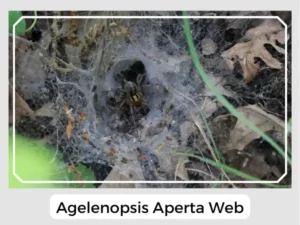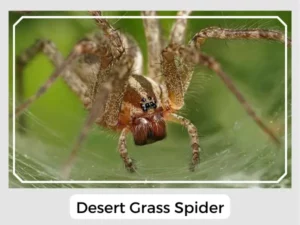The Agelenopsis aperta, commonly known as the desert grass spider, is a fascinating creature that thrives in various environments. These spiders are not only intriguing due to their unique behaviors and physical characteristics but also play a vital role in the ecosystem. By understanding more about these spiders, we can appreciate the diversity and complexity of the world around us.
The egg sacs of Agelenopsis aperta are often hidden in secluded places, woven into silk. These sacs can contain a significant number of eggs, ensuring the survival of the species through high reproductive potential.
Upon hatching, spiderlings are independent and display remarkable survival instincts. They resemble miniature versions of adults but will undergo several molts to reach full size.
The web of the Agelenopsis aperta is a classic funnel shape, designed for efficient hunting. The spider waits in the narrow end of the funnel for prey to touch the web, signaling it to attack swiftly. 
Yes, Agelenopsis aperta spiders are venomous, like many spiders, but their venom is not harmful to humans. It is primarily used to immobilize their prey.
While they can bite, desert grass spiders are generally not aggressive towards humans. Bites are rare and usually only occur if the spider is provoked or handled. The bite may cause mild irritation or discomfort but is not dangerous.
Natural Predator: Agelenopsis aperta spiders serve as natural predators to a variety of insects, helping control pest populations in their habitats.
Prey-Predator Dynamics: Their presence in an ecosystem creates a balanced prey-predator dynamic, contributing to the health and stability of their environment.
Relationship with Humans: Though they may venture into human dwellings, Agelenopsis aperta spiders are not a threat. Instead, they help manage insect populations, demonstrating their beneficial role in human environments. 
| Distribution | Found primarily in North America, particularly in grasslands and open fields. |
| Habitat | Prefers areas with ample vegetation where it can establish its funnel webs. |
| Diet | Mainly insects that get caught in their webs. |
| Lifespan | Typically lives for about a year. |
| Predators | Birds, larger spiders, and wasps. |
| IUCN Conservation Status | Not evaluated, but they are considered to be of least concern due to their widespread presence. |
In conclusion, the desert grass spider is a remarkable creature that plays a crucial role in maintaining ecological balance. Its unique physical characteristics, behaviors, and interactions with the environment underscore the importance of every species in our ecosystem.
The Agelenopsis aperta, commonly known as the desert grass spider, is a fascinating creature that thrives in various environments. These spiders are not only intriguing due to their unique behaviors and physical characteristics but also play a vital role in the ecosystem. By understanding more about these spiders, we can appreciate the diversity and complexity of the world around us.
The egg sacs of Agelenopsis aperta are often hidden in secluded places, woven into silk. These sacs can contain a significant number of eggs, ensuring the survival of the species through high reproductive potential.
Upon hatching, spiderlings are independent and display remarkable survival instincts. They resemble miniature versions of adults but will undergo several molts to reach full size.
The web of the Agelenopsis aperta is a classic funnel shape, designed for efficient hunting. The spider waits in the narrow end of the funnel for prey to touch the web, signaling it to attack swiftly. 
Yes, Agelenopsis aperta spiders are venomous, like many spiders, but their venom is not harmful to humans. It is primarily used to immobilize their prey.
While they can bite, desert grass spiders are generally not aggressive towards humans. Bites are rare and usually only occur if the spider is provoked or handled. The bite may cause mild irritation or discomfort but is not dangerous.
Natural Predator: Agelenopsis aperta spiders serve as natural predators to a variety of insects, helping control pest populations in their habitats.
Prey-Predator Dynamics: Their presence in an ecosystem creates a balanced prey-predator dynamic, contributing to the health and stability of their environment.
Relationship with Humans: Though they may venture into human dwellings, Agelenopsis aperta spiders are not a threat. Instead, they help manage insect populations, demonstrating their beneficial role in human environments. 
| Distribution | Found primarily in North America, particularly in grasslands and open fields. |
| Habitat | Prefers areas with ample vegetation where it can establish its funnel webs. |
| Diet | Mainly insects that get caught in their webs. |
| Lifespan | Typically lives for about a year. |
| Predators | Birds, larger spiders, and wasps. |
| IUCN Conservation Status | Not evaluated, but they are considered to be of least concern due to their widespread presence. |
In conclusion, the desert grass spider is a remarkable creature that plays a crucial role in maintaining ecological balance. Its unique physical characteristics, behaviors, and interactions with the environment underscore the importance of every species in our ecosystem.